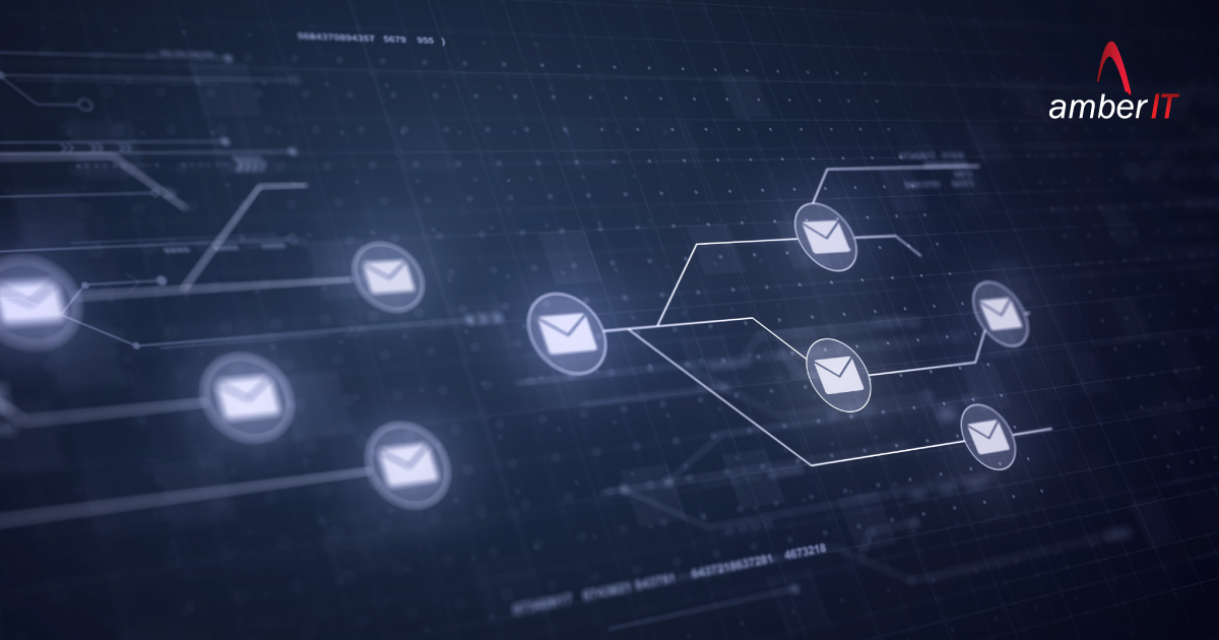It’s a slow weekend morning. You open your email to catch up with some neglected work.
While scrolling, you find an email from a legitimate-looking address with the subject line “EXTREMELY CONFIDENTIAL.”
You open the email, and it says, A Nigerian prince has recently opened up a scholarship program, and you have been chosen. But you have to provide them with your credit card number for a minimal admission fee for that grant.
This was a classic example of Email Spoofing. Read this article to learn more about Email Spoofing - How It Works & Precautions You Need”.
What is Email Spoofing?
Email Spoofing is a type of cybercrime in which the perpetrator uses a fake email address, meant to look real, in hopes of tricking the recipient into believing the email is from a legitimate source.
Whether you use home internet or an office connection, anyone with an email can be subjected to this attack.
How Does Email Spoofing Work
This process is quite simple because the SMTP (Simple Mail Transfer Protocol) does not have a proper set mechanism that can authenticate the sender's address. There have been multiple attempts to fix the spoofing issues, but the adoption rate of those protocols is close to none.
Email spoofing can be classified as a type of phishing. Another example could be a criminal getting access to the real email account of the CEO of a company, which is then used to mail stakeholders for a payment request/ wire transfer on a different account.
The criminal can then withdraw the cash without being caught. All this happens without the knowledge of the CEO and the stakeholders. So Email Spoofing can be very dangerous.
The Inner Mechanics of Spoofing
Nowadays, most email users are smart. They can easily tell if an email is spam or noteworthy. That’s why email spoofing has an upper hand in confusing the recipients. The source is real, but the objective is harmful.
Let’s look at some of the ways email spoofing can occur:
Bypass the spam folder: Even regular emails will sometimes end up in the spam folder. So to combat that issue. The attacker will use a common and simple named email address to trick the built-in spam detectors.
Familiar ID: For more advanced access to the victim's inbox, an attacker might look for victims' family members, close friends, and acquaintances, use their name as the email address, and pose as them.
Identity theft: IT is another common way to get into someone's email inbox. The criminal will straight up hack a powerful person's/celebrity's email account, pretending to be them and ask for money.
Leverage business names: This will only work on people who are regular shoppers at certain malls or businesses. Acting as the business, the criminal will use discount coupons or fake membership forms to gain the personal information of the recipients.
Blackmail: Simply having some sensitive information/assets about the victims, the attacker can use a normal email address and blackmail for an exchange of currency/bitcoins.
Precautions You Need Against Email Spoofing
All these might sound unavoidable, persistent, and confusing but there are some foolproof ways of avoiding email spoofing.
Anti-malware Software
Anti-malware Software is great at identifying suspicious-looking websites and email spoofing. The software will locate the sender and block the access to your inbox. Anti-malware software works like a safety net to protect its users from unknown sources.
Send Emails with Signature
This one should be adopted by businesses and important figures to clear any confusion with their identification process. But in general, it's good to have an authorised signature or digital stamp at the end of every email that will signify the sender's legitimacy.
Any malicious individual/ group hoping to commit identity theft will fail miserably.
Trustworthy Broadband Internet Connection
Public WiFi, as tempting as it feels, is awful for your device and makes you an easy target for cyber attacks. As public WiFi allows for little to no security, investing in good broadband internet or home wifi is a must.
AmberIT is recommended, as it provides the fastest and safest internet connection across all your devices. So you don't even have to worry about your email being breached or hacked.
Avoid Away Giving Information
Just use command sense. Really- there is no other way. If the content of the email is out of the ordinary, double-check it with the sender over a phone or text conversation.
If you don't have direct access to the sender (e.g., Business Firms), proceed with caution and avoid giving too much information that can be used against you.
Final Thoughts
The cyber attackers use email spoofing as a fabrication tactic to gain the trust of unsuspected recipients and coerce them into giving away their sensitive information.
I hope after reading this full article about Email Spoofing - How It Works & Precautions You Need you now have a grasp on how to avoid and protect yourself against these ill-intent cyber attackers.





